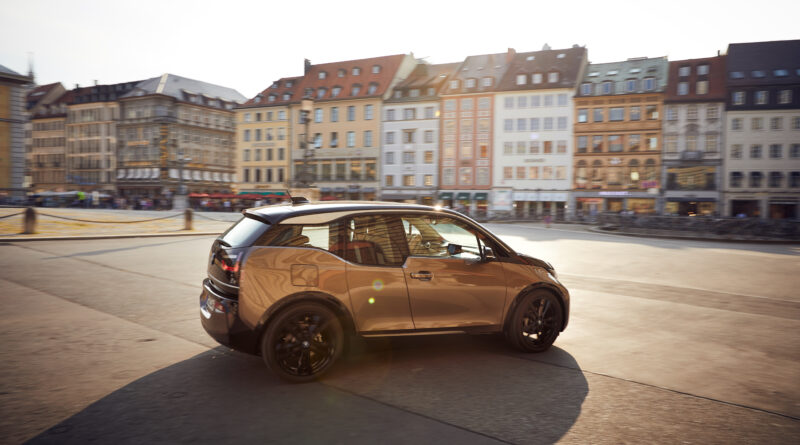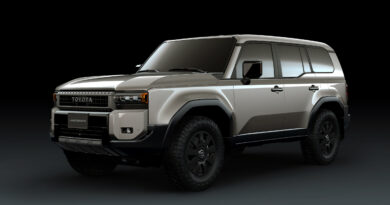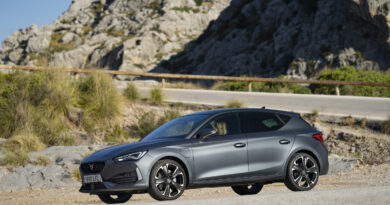BMW i3s review
Though costly and odd looking, the BMW i3 is an EV that also stands out for its advanced technology, energy efficiency and handling.
BMW began work on its Mega City Vehicle project in 2007. The idea was to come up with an electric car specifically designed and perfectly adapted for life in an increasingly urbanised world. The i3, which launched in Australia back in 2014, was the result.
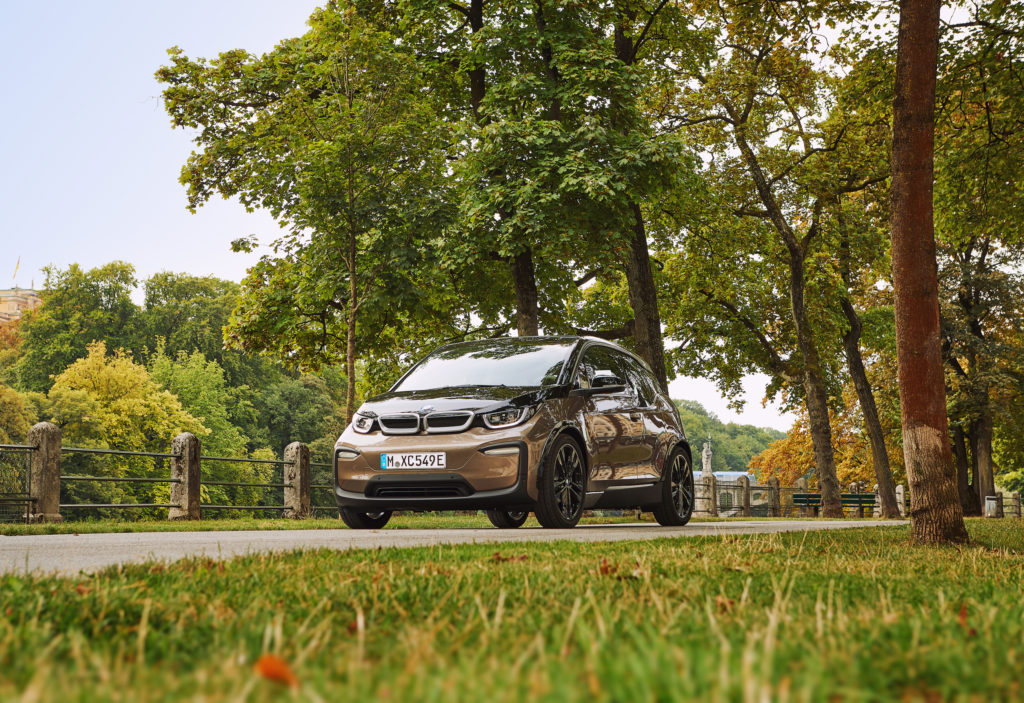
Since the original i3 went into production, BMW has twice upgraded the capacity of its battery pack. Though the physical dimensions haven’t changed, the battery pack of today’s i3 stores twice as much energy as the 2014 version. It can therefore drive twice as far, around 270km, on a charge.
Annual global sales of the i3 have climbed steadily during its lifetime. As a result, BMW executives promise it will continue to roll off the company’s assembly line in Leipzig, Germany, well into the middle years of this decade.
Value
BMW Australia has quietly dropped the standard i3 and now imports only the i3s version. That extra ‘s’ means a little more power and sportier handling. The base price of the i3s is $70,900.
This makes the BMW at least $20,000 more than other small electric hatchbacks like the Hyundai Ioniq EV, Nissan Leaf and Renault Zoe. The i3s is also more expensive than the Standard Plus variant of the Tesla Model 3, the least costly in the line-up, as well as the Hyundai Kona EV in Elite and Highlander equipment grades. Both the Tesla and Hyundai have much bigger battery packs and a longer driving range than the BMW.
It’s no bargain, but the price of the i3s is to some extent justified. BMW makes its passenger cell from a lightweight composite usually seen only in hyper-expensive supercars. Underneath the plastic-panel-clad carbon fibre reinforced plastic structure a purpose-designed aluminium chassis encloses the underfloor battery pack. These choices mean the i3s is light for an EV.
There’s a lot to like in the standard equipment list. The instrument panel’s central high-res screen delivers a fairly rich infotainment experience. But some of the connected services, including map updates and real-time traffic info for the excellent sat-nav, are provided free only for three years. Also worth knowing is that the system is prepped for Apple CarPlay. A smaller high-res screen behind the steering wheel delivers a configurable instrument display.
BMW has spent decades refining the iDrive controller that’s used to navigate car set-up, information and entertainment menus and their system is now among the most intuitive to use.
Buyers of the i3s also receive a three-year ChargeFox subscription. Based in Victoria, this outfit is a leading provider of fast-charging infrastructure. It’s gradually installing a network of super-powerful DC fast-chargers on major routes like the Hume Highway, though the i3s can only use a fraction of their capacity as it’s limited to 50kW. There’s also a 250kWh annual use cap, which equates to only around five hours of no-charge recharging, a rather stingy allowance.
For home charging the i3s will take 7.4kW from a single-phase AC wallbox or 11.0kW from a three-phase AC wallbox. Either rate will easily deliver a full recharge overnight.
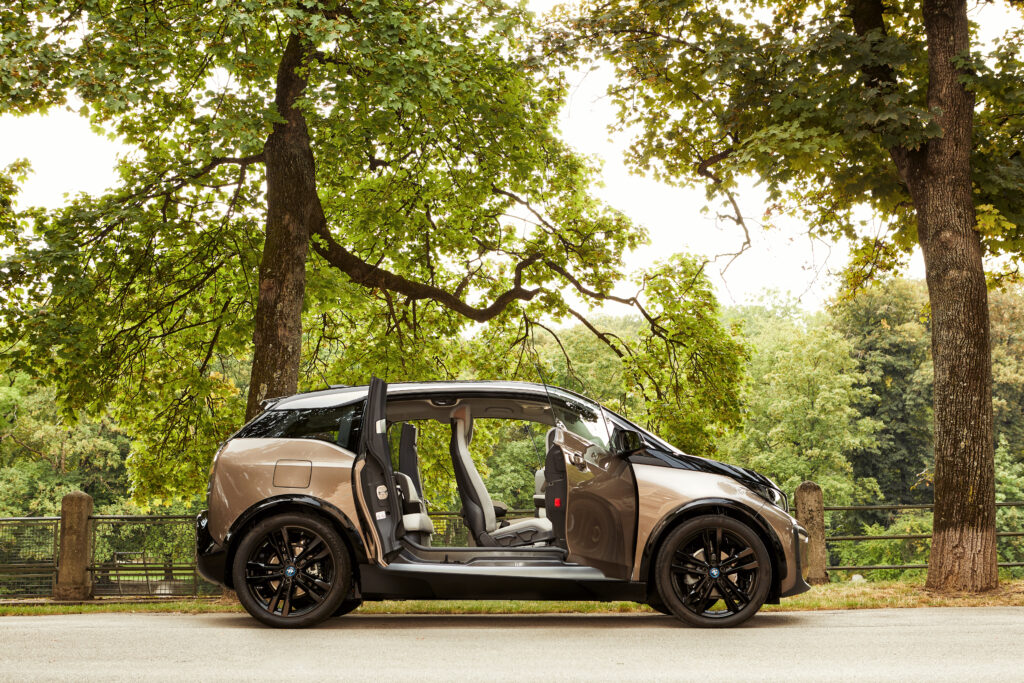
Inside
Recycled and sustainable materials feature heavily in the interior fit-out, adding emphasis to the i3s’s green credentials. What’s more, the overall look and feel of the cabin is attractive, charming and user-friendly. This EV has one of the very best interiors from BMW in recent years.
The combination of underfloor battery pack and short overall length mean the seats are slightly more raised than in a conventional small car. Though the A-pillars either side of the windscreen are thick, all-round vision isn’t bad.
Adults will find the rear seat sufficiently spacious, but there are seatbelts for two occupants instead of three. Folding the rear seats increases the carrying capacity of the i3s to 1100 litres. Seats up there’s 260 litres, similar to a small city car. Because the car’s motor is mounted between its rear wheels, the floor of the cargo compartment has to be high. This cuts into luggage space.
But wait, there’s a more serious problem. The hinges of the BMW’s slim rear doors are at the back and the conventional front-hinged front doors must be opened before these so-called ‘suicide doors’ can be used. Though this arrangement adds a touch of design novelty, it also subtracts from quotidian practicality in ways that are not difficult to imagine.
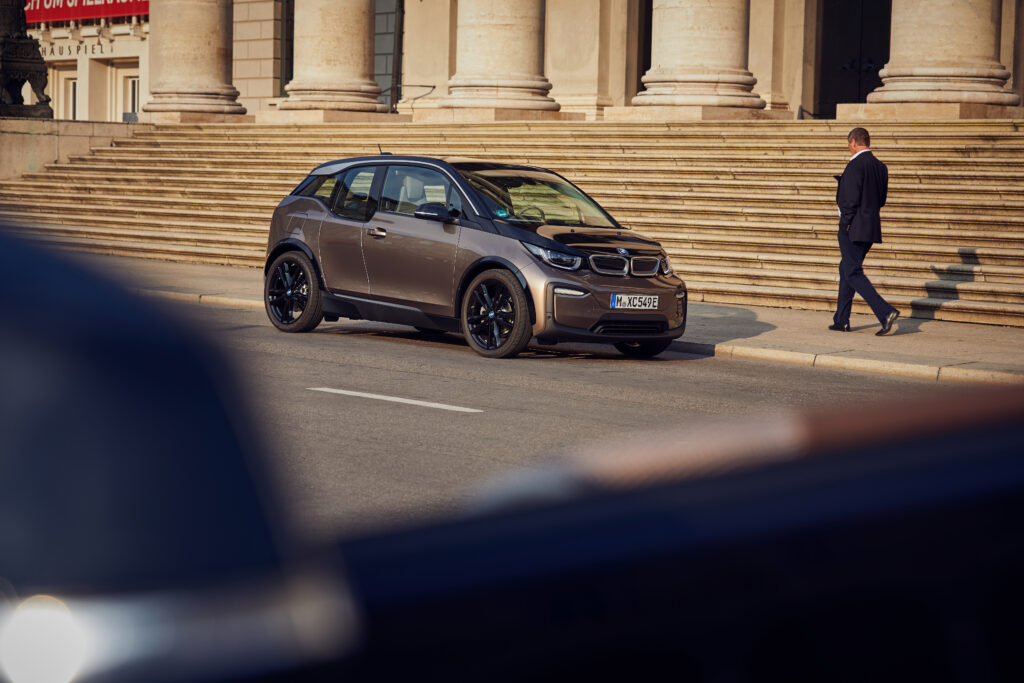
Performance and efficiency
Snappy acceleration, especially from standstill, is something the i3 has always delivered. With a slightly more powerful motor than the standard i3 (no longer sold in Australia), the i3s is even quicker off the mark.
Though acceleration tapers off as speed rises, the BMW will happily cruise at motorway speeds. Top speed is limited to 160km/h, but the i3s has enough power for highway overtaking.
Like the majority of EVs, the i3s doesn’t have the kind of multi-speed transmission found in conventional cars. Instead there’s a single fixed gear, like on those old-fashioned bicycles hipsters prefer. And because an electric motor doesn’t need to idle while the car is stationary, there’s no need for a clutch or torque convertor.
Transmissions don’t get any simpler than this, or smoother. Having only one gear means never having to shift from one ratio to another, thus neatly sidestepping the potential problem of jerky shifting.
What makes the i3s feel nippy also makes it energy efficient. Despite its heavy slab of lithium-ion battery pack, the BMW weighs just under 1300kg when empty. This is similar to a Toyota Corolla or Mazda 3.
As in internal combustion cars, lightness enhances efficiency. The official 14.5kWh/100km figure of the i3s is at the low end of the EV energy consumption table.
Though its official range is 270km-plus, BMW says that 260km is a more realistic everyday max driving range. The driver can choose driving modes to reduce energy consumption and increase range compared to the Comfort default mode. Selecting EcoPro cuts the energy consumption of the heating, ventilation and air-con system. EcoPro+ additionally reduces motor power and top speed.
Charging
The i3s has an 11kW on-board AC charger. Connected to a wallbox power supply of the same rating, the 38kWh battery pack of the BMW will recharge from empty to full in five hours or so. Ambient temperature, the battery pack’s state of charge and other factors will affect recharging time.
The i3s comes standard with a cable that connects to a standard power socket. Charging this way is painfully slow; it’s intended only for emergency or use. A home or workplace wallbox that charges at a reasonable rate is obviously a must-have.
For DC fast charging, the i3s is limited by to 50kW.
Under the BMW’s bonnet is a 35-litre tub that’s a handy, out-of-the-way place to stash charging cables.
Ride and handling
Despite the way it looks, BMW’s EV is quite entertaining to drive. This is an agile car that’s fun through the corners.
The i3s wears larger wheels and wider rubber than the i3, a change that improves roadholding. But the sporty version also rides on lower and stiffer springs. While this change improves the handling, it does the opposite for comfort. Some potential buyers may be put off by the firm suspension set-up BMW has chosen.
Still, the i3s is a great city car. It has a really tight turning circle and few cars can match its U-turn prowess. And the BMW’s compact dimensions, good visibility and slightly elevated driving position make parking easier.
With its strong regenerative braking, the i3s is a car that invites the driver to adopt a so-called ‘one-pedal’ driving style. Releasing pressure on the accelerator pedal switches the BMW’s motor into a generator, sending a strong surge of power back into the battery pack at the same time as significantly slowing the car. Regenerative braking alone can bring the i3 to a stop.
Ease pressure on the accelerator rather than entirely releasing it and the i3s will coast along, neither consuming or generating electricity. The instrument screen includes a graphic display to show the driver what the car’s powertrain is doing.
One benefit of the i3s’s strong regenerative braking is that its friction brakes – only needed to make really hard stops – are very long lasting. The i3 has been around long enough for some to have racked up huge mileages. One owner has reportedly covered almost 300,000km without ever having to replace his car’s original brake pads.
Safety
The i3s has a five-star safety rating from Australia’s independent crash-test organisation ANCAP. It’s equipped as standard with a fine array of safety systems, including Autonomous Emergency Braking and six airbags. The only obvious omission is relatively minor; the BMW lacks a warning system to alert the driver if rear-seat passengers fail to use their seatbelts.
Verdict
Lively and fun to drive, the i3s is the most entertaining small EV on the market. Most at home in the urban environment for which it was designed, the bigger battery pack of the current version make it more country-driving capable than ever before.
Its outstanding interior and extensive standard equipment list are in line the hefty price tag, but some will find the BMW’s compromised rear door design and relatively small cargo compartment impossible to overlook. Others considering the switch to EV may want a longer driving range for their money.
But for those who want a small but premium-feeling EV, the classy i3s has no real rival.
BMW i3s
Price: $70,900
Basics: EV, 4 seats, five doors, hatchback, rear drive
Range: 270-285km
Battery: 38kWh
Battery warranty: 8 years/100,000km
Energy consumption: 14.5kWh/100km
Motor: 1, rear, 135kW/270Nm
AC charging: 11kW, Type 2 plug
DC charging: 50kW, CCS plug
0-100km/h: 6.9 seconds

